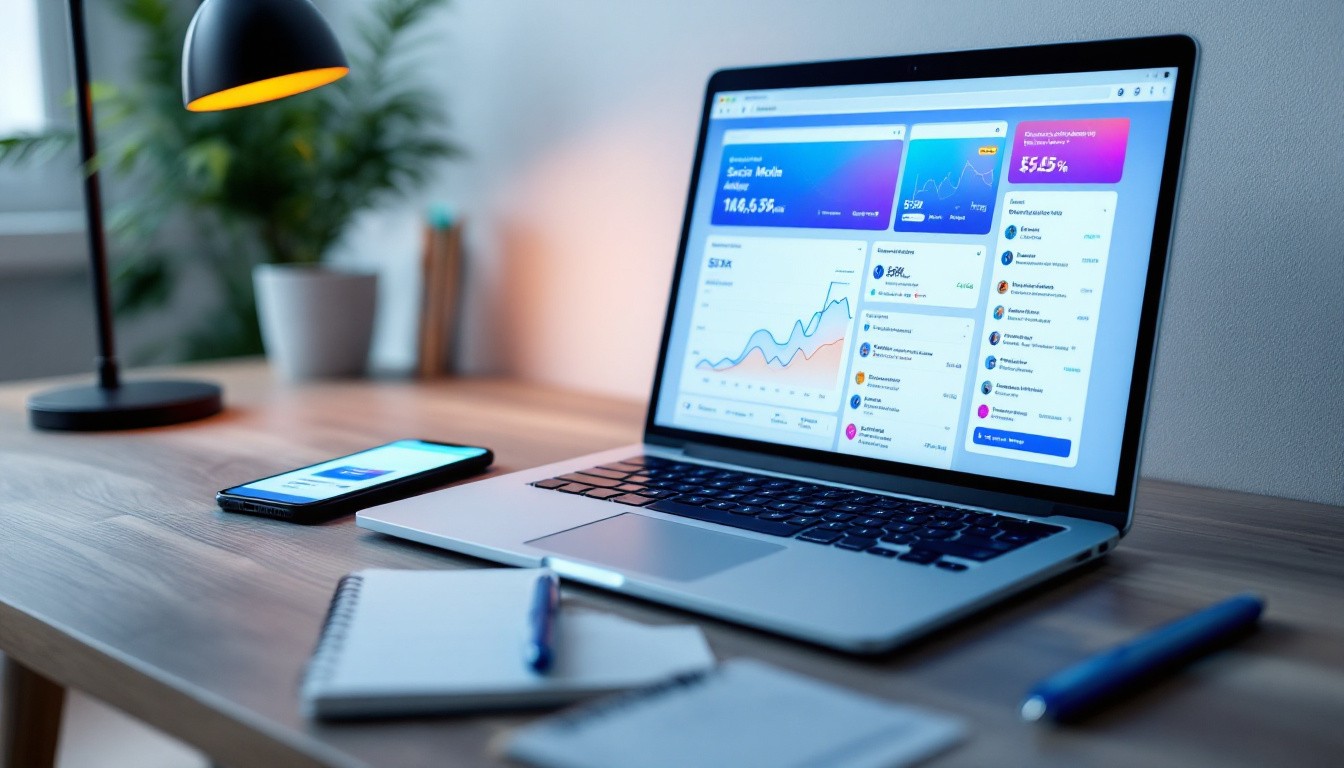Social media engagement rates have dropped 20% across major platforms since 2022, making it harder for businesses to connect with their audiences.
We at Innovative Events have tested dozens of strategies to increase customer engagement social media and found that most companies focus on the wrong metrics. The brands that succeed use data-driven approaches combined with authentic storytelling to build genuine connections with their followers.
Who Is Your Social Media Audience
Most brands waste thousands of dollars on social media because they skip audience research and jump straight into content creation. Companies that achieve 3x higher engagement rates start with deep audience analysis using concrete data, not assumptions.
Demographics Tell Only Half the Story
The best insights come from combining different data types rather than relying solely on basic demographics like age and location. Behavioral patterns predict engagement better than demographics alone. Instagram users between 25-34 spend 53 minutes daily on the platform, while LinkedIn users in the same age group average just 17 minutes. This behavior difference changes everything about your content strategy.
Track when your audience engages most actively using platform analytics. Facebook Insights reveals that B2B audiences engage 67% more on Tuesday through Thursday, while consumer brands see peak engagement on weekends. User behavior data beats demographic guesswork every time.
Platform Culture Drives Content Performance
Each platform has distinct user expectations that directly impact engagement rates. TikTok users expect authentic, unpolished content with trending audio, while LinkedIn users prefer professional insights with data backing. Instagram carousel posts generate 1.92% engagement rates compared to single images at 1.74%, but the same carousel format fails on Twitter where single images with concise captions perform better.
Since Q4 2021, there’s been a 58% increase in the number using TikTok to keep up with the news, while 89% of business executives use LinkedIn for industry updates. Match your content format to platform culture, not your brand preferences.
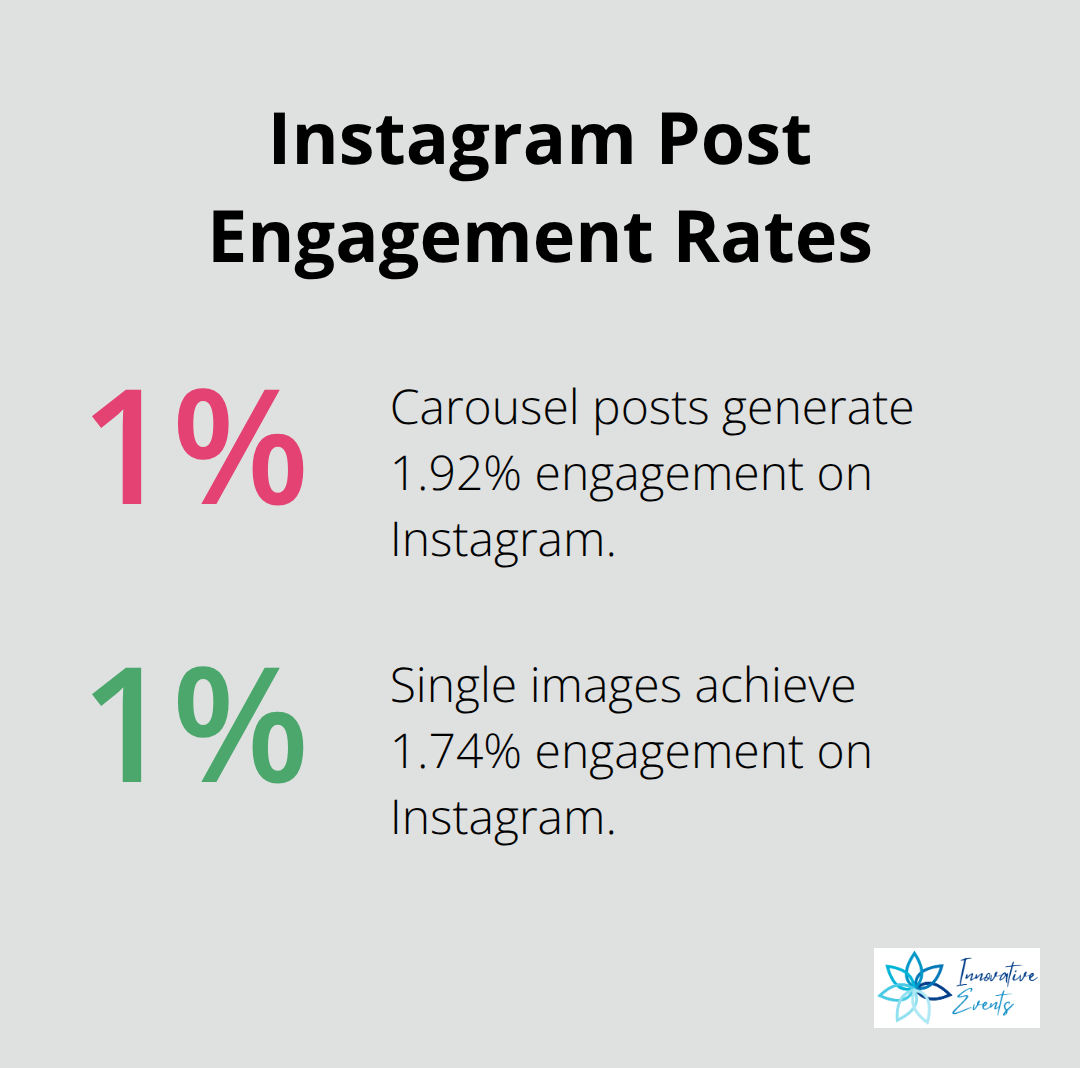
Test Content Types for Maximum Impact
Test content types for 30 days on each platform and measure engagement rates to identify what resonates with your specific audience segments. Visual content receives 94% more views than text-only posts (according to HubSpot research), but the type of visual content matters significantly across platforms.
Video content on Facebook leads to higher engagement than photos or graphics, especially when you add captions for accessibility. Instagram allows up to 30 hashtags per post, but posts with 3-5 hashtags achieve better reach and engagement rates than posts with maximum hashtags.
Once you understand your audience behavior patterns and platform preferences, you can create content strategies that actually drive meaningful engagement rather than vanity metrics.
What Content Actually Drives Social Engagement
Interactive content generates more engagement than static posts, but most brands create the wrong type of interactive content. Polls and quizzes work on Instagram Stories, while LinkedIn users respond better to thought-provoking questions in regular posts. Video content receives 1,200% more shares than text and images combined (according to Brightcove research), but video length matters significantly across platforms.
TikTok videos between 21-34 seconds achieve the highest completion rates, while LinkedIn videos should stay under 90 seconds for maximum engagement. Instagram Reels under 30 seconds get 28% more engagement than longer videos.
Visual Content Formats That Convert
Carousel posts on Instagram yield 1.92% engagement compared to single images at 1.74%. Visual content receives 94% more views than text-only posts, but the type of visual matters significantly. Infographics perform exceptionally well on Pinterest and LinkedIn, while behind-the-scenes photos drive higher engagement on Instagram Stories.
Video content on Facebook leads to higher engagement than photos or graphics, especially when you add captions for accessibility. Platform-native features like Instagram Reels or LinkedIn Live enhance organic reach significantly compared to external video links.
Behind-the-Scenes Content Builds Authentic Connections
Companies that share behind-the-scenes content see 73% higher engagement rates because audiences connect with real people, not polished brand messages. Show your team preparing for events, setting up equipment, or solving problems in real-time. This authentic content style works particularly well for service-based businesses where trust drives decisions.
Employee-generated content receives 8x more engagement than brand-created content, and posts that feature employees get 24% more shares than company-only content.
User-Generated Content Delivers Measurable Results
User-generated content drives 28% more engagement and achieves four times higher click-through rates than brand-created content. Create specific hashtags for your events and encourage attendees to share their experiences with those tags. Repost customer content with proper attribution, but add your own commentary to provide context and value.
Instagram accounts that regularly feature UGC grow 4x faster than accounts that post only original content. The key is to respond to every piece of UGC within 4 hours to maximize the engagement boost and show appreciation for your community.
Your content strategy means nothing without proper timing and frequency. The next step focuses on when and how often to measure social media engagement metrics for maximum impact.
When Should You Post for Maximum Engagement
Peak audience activity times boost engagement by 23% compared to random schedules, according to Sprout Social data. Facebook users engage 67% more on Tuesday through Thursday between 9 AM and 10 AM, while Instagram shows highest engagement on weekdays from 11 AM to 1 PM. LinkedIn performs best on Tuesday, Wednesday, and Thursday from 8 AM to 10 AM when professionals check updates before meetings. TikTok engagement peaks between 6 AM to 10 AM and 7 PM to 9 PM when users scroll during commutes and evening downtime.
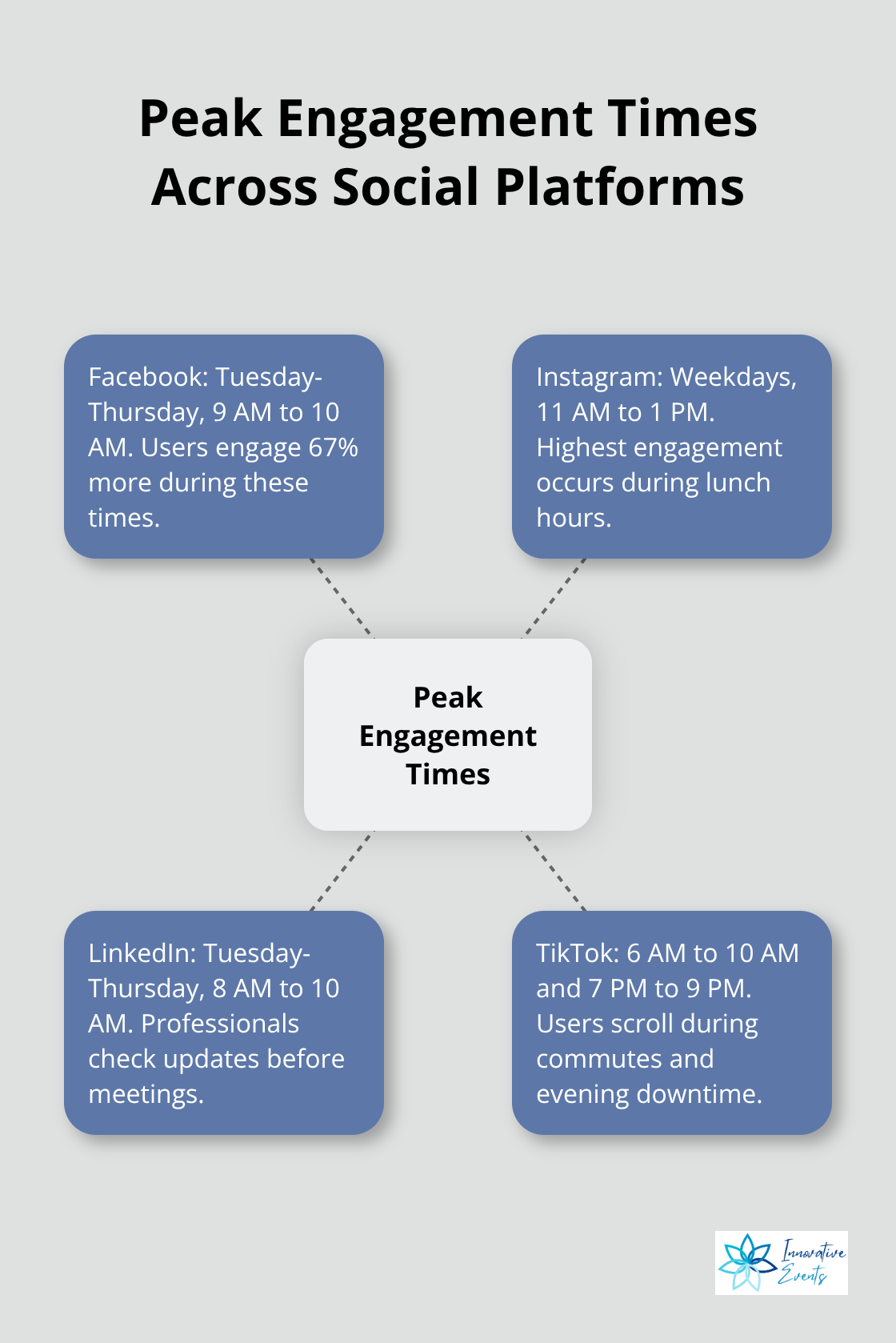
Platform-Specific Frequency Rules Drive Results
Post frequency directly impacts algorithm visibility and audience retention across platforms. B2B brands achieve optimal results with 5 posts per week on LinkedIn, while Instagram requires daily posts to maintain algorithm favor. Facebook posts perform best with 3-5 weekly updates, but more than 7 posts per week causes follower fatigue and decreased reach. TikTok demands consistent daily content, with brands typically posting 1.75 times per week according to industry research. Twitter requires 3-5 tweets daily to stay relevant in fast-moving feeds, while Pinterest performs well with 5-30 pins daily due to its search-focused nature.
Track Engagement Patterns for Strategic Adjustments
Monitor engagement rates within the first 24 hours after you post, as this period determines long-term post performance across all platforms. Instagram posts receive 75% of their total engagement within the first 6 hours, while LinkedIn posts continue to gain traction for 48-72 hours. Use platform analytics to identify your audience’s peak activity windows rather than follow generic best practice guides. Accounts that adjust post times based on their specific audience data see 35% higher engagement than those that use platform averages (according to Hootsuite research). Test different time slots for 2-4 weeks, then optimize your schedule based on actual performance data rather than industry recommendations.
Weekend vs Weekday Performance Varies by Industry
Consumer brands see peak engagement on weekends when users have more leisure time to browse social media, while B2B companies perform better during weekdays when professionals actively use platforms for business purposes. Instagram engagement drops 15% on Sundays for business accounts but increases 22% for lifestyle brands. LinkedIn sees 40% lower engagement on weekends, making weekday posts essential for professional content. TikTok maintains consistent engagement throughout the week, but videos posted on Friday evenings receive 18% more shares as users prepare for weekend entertainment.
Final Thoughts
Social media engagement success requires three fundamental elements: deep audience understanding, strategic content creation, and optimized timing. Companies that increase customer engagement on social media focus on behavioral data over demographics, create platform-specific content, and post when their specific audience is most active. Start with these strategies immediately by analyzing your current audience data and testing different content formats for 30 days.
Track engagement rates within the first 24 hours of posting to identify what resonates with your followers. Adjust your posting schedule based on actual performance data rather than generic industry recommendations. Long-term success comes from consistent testing and adaptation (user-generated content drives 28% more engagement, while video content receives 1,200% more shares than static posts).
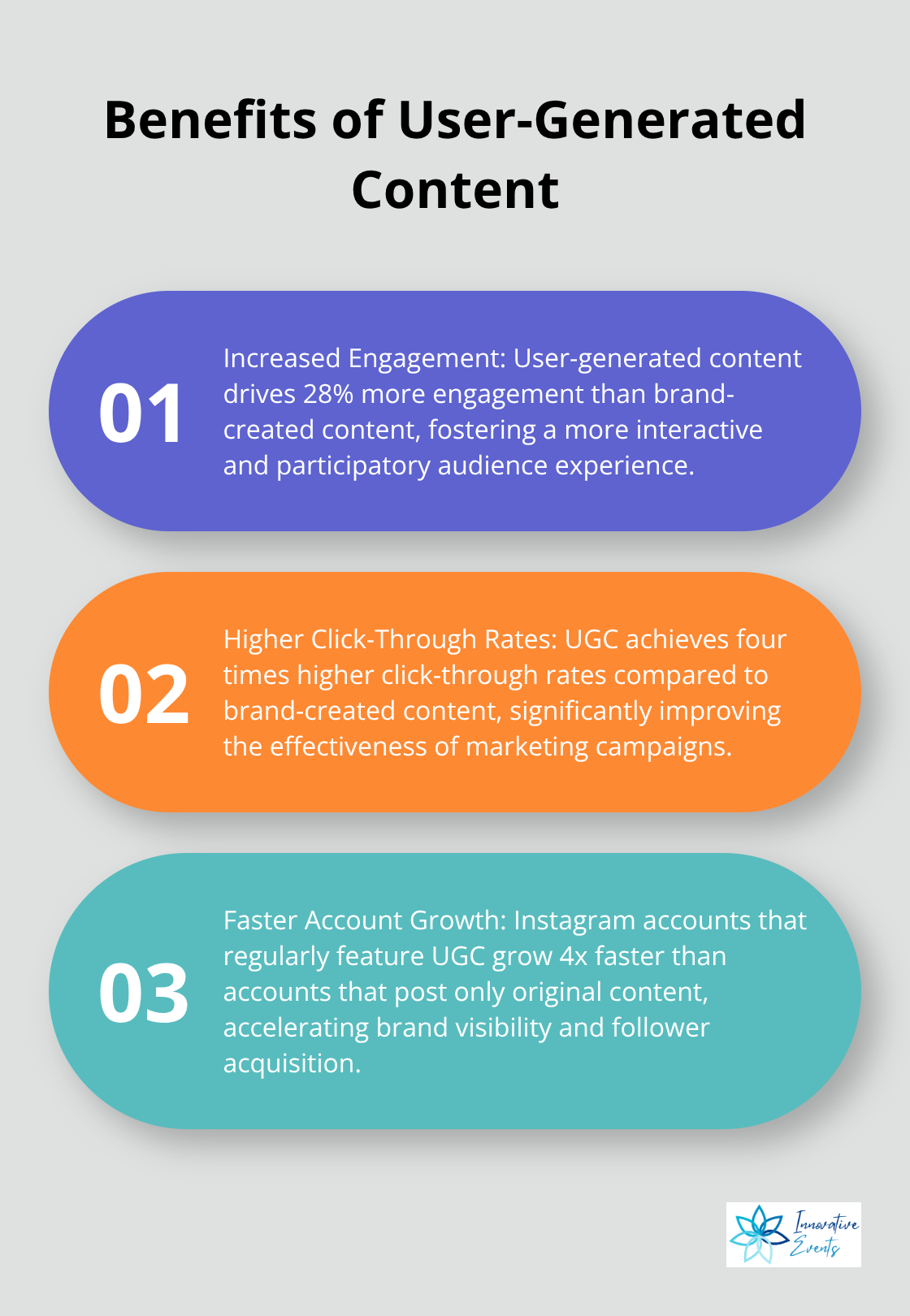
Focus on authentic storytelling and behind-the-scenes content that builds genuine connections with your community. We at Innovative Events help businesses transform their social media presence through strategic content creation and exceptional brand experiences. Our comprehensive marketing services deliver measurable results that drive meaningful engagement and build loyal communities around brands.
